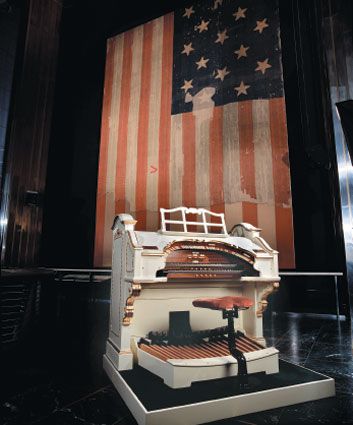

In place of reeds and pipes, Robb and Hammond introduced a set of rapidly spinning magnetic wheels, called tonewheels, which excite transducers that generate electrical signals of various frequencies that are mixed and fed through an amplifier to a loudspeaker. The Hammond organ quickly became the successor of the reed organ, displacing it almost completely.įrom the start, tonewheel organs operated on a radically different principle from all previous organs. The first widespread success in this field was a product of the Hammond Corporation in 1934. Meanwhile, some further experimentation with producing sound by electric impulses was taking place, especially in France. Cahill's techniques were later used by Laurens Hammond in his organ design, and the 200-ton Telharmonium served as the world's first demonstration of electrically produced music on a grand scale.

Thaddeus Cahill's gargantuan and controversial instrument, the Telharmonium, which began piping music to New York City establishments over the telephone system in 1897, predated the advent of electronics, yet was the first instrument to demonstrate the use of the combination of many different pure electrical waveforms to synthesize real-world instrument sounds. Electrically powered reed organs appeared during the first decades of electricity, but their tonal qualities remained much the same as the older, foot-pumped models. The use of electricity in organs emerged in the first decades of the 20th century, but it was slow to have a major impact. Telharmonium console by Thaddeus Cahill, 1897.

Various types of electronic organs have been brought to market over the years, with some establishing solid reputations in their own niche markets.Įarly electric organs (1897–1930s) At the time, some manufacturers thought that emulation of the pipe organ was the most promising route to take in the development of an electronic organ. In the 1930s, several manufacturers developed electronic organs designed to imitate the function and sound of pipe organs. This concept played an important role in the development of the electric organ. The reed organ is thus able to bring an organ sound to venues that are incapable of housing or affording pipe organs. While reed organs have limited tonal quality, they are small, inexpensive, self-powered, and self-contained. In a fashion not totally unlike that of pipe organs, reed organs generate sound by forcing air over a set of reeds by means of a bellows, usually operated by constantly pumping a set of pedals. The immediate predecessor of the electronic organ was the harmonium, or reed organ, an instrument that was common in homes and small churches in the late 19th and early 20th centuries. 2.1 Pipe-electronic hybrid organs (1930s–).Import VAT and customs duty should be paid by the UK buyer and collected by the parcel operator. South America: Only Express possible, and Canada: Transit times might be longer than usual.ĭetailed information for all countries worldwide: īrexit: For orders send to the UK the minimum order value is EUR 160.00 (GBP 135.00) net since 1st January 2021. USA: Long transit times, packages require Corona surcharge, Express on timeĪustralia and New Zealand: Delays on shipments caused by slower air/ocean freight (up to 10 weeks), packages require Corona surcharge.
1970 WURLITZER ORGAN VALUE UPDATE
Orders for Steiff bears and Kösen plush animals will be processed right away!Ĭorona update regarding shipments: Shipments stay subject to delays. Please order only if you can accept this delay.

Larger orders and orders which include glass items, grill screens, mech covers and similar item which need extra time for packing need three weeks or longer. Small orders with items that are ready to be packed and send usually leave within a week. We reveice more orders and requests than we can handle. Delay: Please note that currently there is delay on processing orders.


 0 kommentar(er)
0 kommentar(er)
